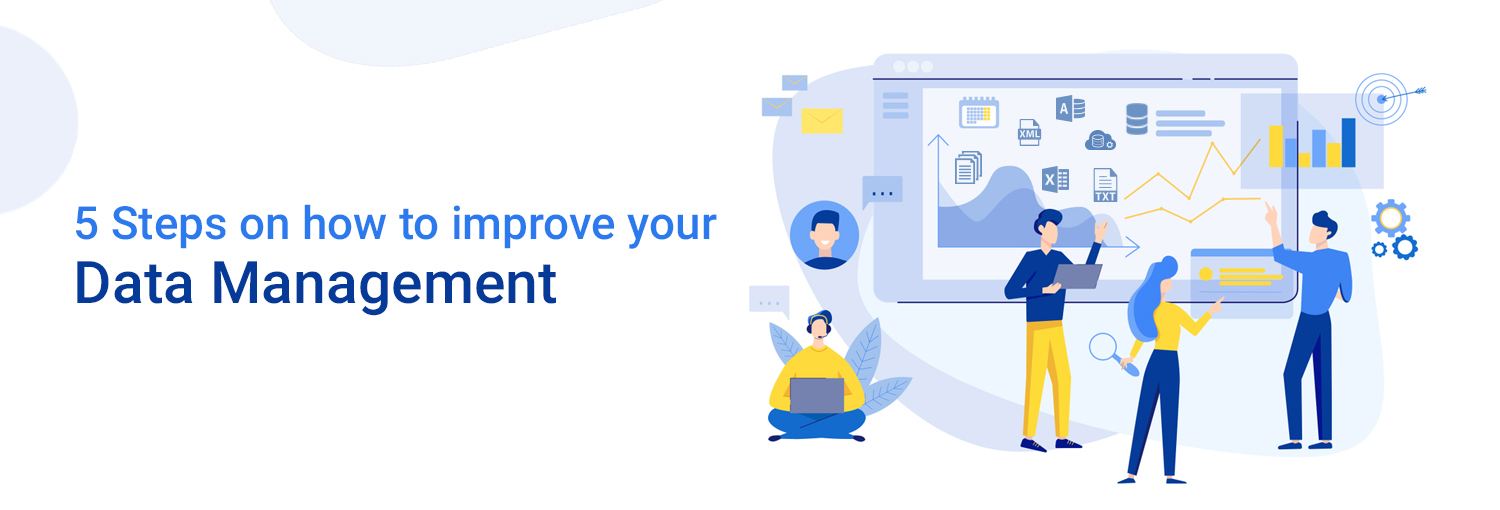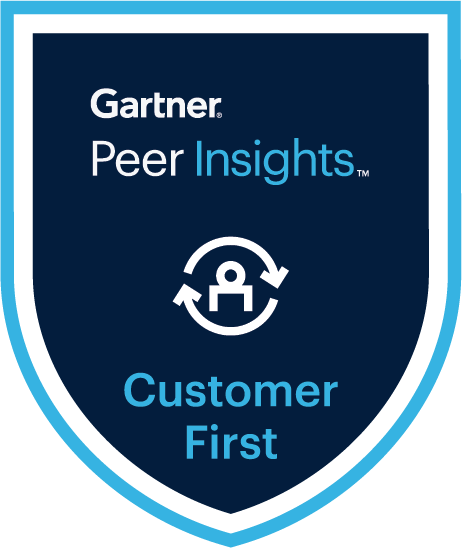
5 Steps on how to improve your Data Management
As most of the companies are connected and online business activities increase, so does the info generated by these interactions. But, how the data is used? Are you harnessing the insights it imparts to extend sales or launch new products? If not, why not? This post gives you 5 steps on the way to improve your data management efforts. A study by the worldwide Association of Risk Professionals and SAS revealed that fewer than half the managers surveyed said their financial institution’s expertise on data management was adequate or strong.
If you’re almost there yet, it might appear on this basis that you’re not alone.
This lack of experience is widespread across many sectors and industries, and it might be depriving you of the chance to maximize the info you possess. additionally, it could put you at risk of neglecting the protection of knowledge, risking your brand reputation and regulatory sanctions, like those listed within the General Data Protection Regulation (GDPR) where fines run up to 4% of annual turnover.
If you’re within the process of examining your organization’s data management position, these five steps will assist you to improve your data management processes for profitable impact.
1) Take ownership of knowledge management
Many organizations are now employing chief data officers (CDOs) to assist them manage data governance and therefore the use of knowledge as a business asset. And, with good reason: a survey by Forrester Research found organizations with a CDO were 70% more likely to scale back risk and better ensure compliance than a corporation without a CDO.
But still, a substantial number of enterprises—60.6% consistent with a survey from NewVantage Partners—identify others because the point of primary responsibility for data strategy and results, or claim no single point of accountability.
So, the primary step is to put data management responsibility where it makes the foremost sense. By re-shaping your business approach to data strategy, and by appointing individuals to require responsibility for implementing and governing it, you start to require ownership of your data.
You’ll now have accountability, and with this comes procedures and processes to assist you to govern your usage of knowledge, allowing you to start to use it as an asset for delivering business success.
2) Create a connected data basis
How does one collect, process, store and consume data across your business? The chances are that as your organization has grown, data management has become decentralized with no real management strategy in situ to support it, and, to be frank, it’s become a touch of a nightmare to manage.
Disparate systems got to be connected and data architecture standardized. Once you’ve achieved this, you'll begin to align your use of knowledge together with your business strategy.
Organizations working with fragmented legacy systems are experiencing insurmountable gaps once they attempt to retrieve and utilise their data. They’re also risking non-compliance with new regulations as they can’t provide the transparency needed to point out how their information was acquired.
You can prefer to link your existing systems, replace them with a replacement one, or choose a mixture. The essential thing is that your data system(s) support data coherence and visibility, also as deduplication, and use archive technologies to permit you to guard more while storing only what you would like. It also must be flexible enough to support future growth.
3) Manage your metadata
Metadata provides information on your primary data like when it had been acquired, created or revised - plus its location and the way it’s formatted.
Managing your metadata and creating a uniform business information infrastructure is significant when it involves referencing, accessing and consuming business data. Many organizations are missing basic facts including who owns specific information, how important that information is and the way relevant it's to the business.
Managing your metadata will assist you to map and classify information and assess its value so you'll protect and prioritise data that’s valuable to you.
4) Plan the way to deliver your data
Once your data is in check, how are you able to format and deliver it for optimum use across the business? this is often particularly important if your company operates multiple ERP and CRM technologies and e-commerce platforms.
Data delivery is about putting relevant information into the proper systems and into the hands of the proper people. because the GDPR and its likes loom, accurate reporting is important. Businesses are going to be required to supply detailed information on the acquisition, management and protection of the data they possess.
You need to possess systems in situ that enable users to require actual business actions supported by data-driven insight, as an example by using customer data reports to reinforce existing products and make new ones geared towards an identified customer need.
5) Adopt consistent data governance policies
With a knowledge platform in situ, you'll finally work on your data governance by implementing consistent company policies around your handling and use of knowledge. These should cover physical, virtual and cloud environments. All of your data should be classified and controls set regarding access, distribution, retention and deletion.
Summing up the way to improve your data management. Although data management is an evolving process for several organizations, reaching this stage of having the ability to use company-wide policies around data seems like quite an achievement to enhance your data management.
And, the pressure is on for businesses to succeed in this milestone sooner instead of later—if they’re to optimize their business and avoid penalties for the mishandling of knowledge.
How to Approach Data Management with 3 Basic Steps
All companies have different business visions counting on their industry. The primary thing you would like to try to do is establish what your business vision is, where the vision goes within the future and who owns it.
You need to seem at the vision and ask what your business differentiator is – what’s your fundamental ‘thing’? it's always one among these three:
Customer centricity - we would like to deliver personalized and valued customer experiences
Product excellence - we've the simplest product(s) on the market
Operational efficiency - we would like to be the fastest and most convenient choice at rock bottom price
Once you've got established this for your business you would like to figure the master data management initiative into the framework. So, if your business 'thing' is customer-centricity then you ought to probably focus your MDM efforts on the customer domain. If it’s operational efficiency or product excellence then you presumably got to specialise in product and/or supplier MDM.
Note, if your vision is quite 10 years old, it probably must be updated. Your 2020 vision will presumably differ tons from your 2010 vision thanks to the digital development. A bit like your MDM efforts, your vision must change once in a while.
Eliminate poor quality data: Solve data redundancies and inconsistencies by automating how to eliminate duplicate data and prevent delays or uncertainty in the verification stage.
Integration of your business processes: Minimize the time and expense of managing resources to meet the increasing data size by combining all related resources into a centralized, unified master data platform.
Fast-track your business processes: Enhance the consistency of customer master data on a continuous basis so that you get consistent and data-rich insights to offer unforgettable real-time experiences
Improved decision-making: Enable smart business choices to boost customer service and build brand loyalty, from handling corrective actions to delivering marketing strategies.
No matter how well you present the advantages of MDM, the business owner will say “Show me the cash .” In other words: the business value of a Master Data Management solution has got to be very clear. That’s why you would like to present a business case and justify the ROI upfront to be ready to make an honest business case for MDM. But how does one establish the ROI for MDM? this will be very hard. However, the worth of MDM are often made very visible with this strategy supported business metrics.
All of those metrics have a business owner. What you would like to try to do is locate the owner of the strategic and process metrics and define their KPI's. Each of them has targets and challenges, and a few of those are going to be data-related. you would like to possess conversations with these people. Ask them what problems they need, where they might wish to be, and the way they think their problem(s) are often solved. Bring these people to the table and have finance help them define what these problems are costing the organization, and the way much it can save by solving them. Use these tangible inputs to create your business case.
So, there you've got it. The initial steps to urge started with a Master Data Management approach.
To learn more about master data management, visit our MDM site.





